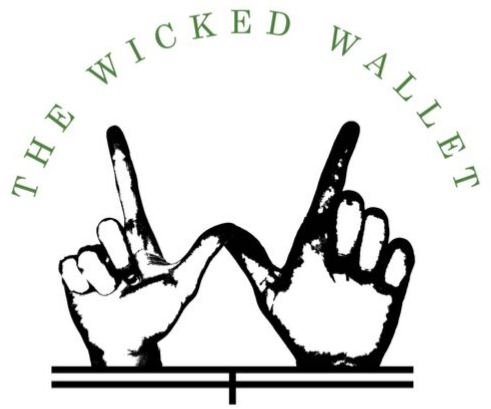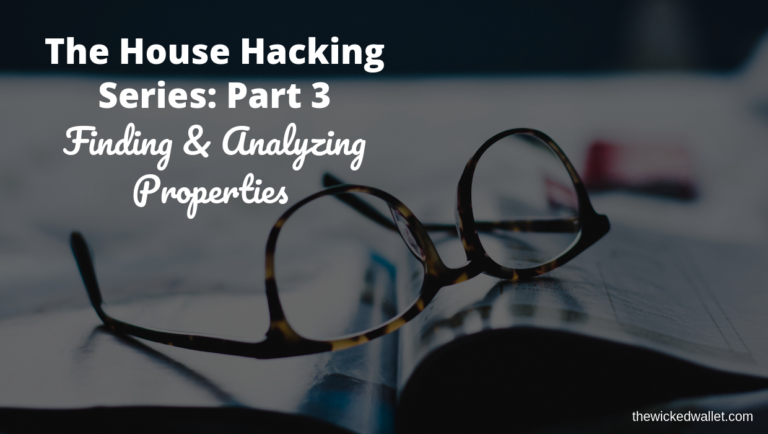You’ve done your loan research, you have talked to your lender and you have been self-educating… now what? The next steps take a bit more time, as you want to make sure you are getting a good deal. We saw too many houses to count before buying. You want to make sure you are purchasing the right property that is the best investment for you. So, try your best not to rush through these steps.
Before we delve into finding and analyzing deals, you should be sure to read Part 1 and Part 2 of this series which outlines the basics and how to be a landlord. Both of these articles will provide you with a better understanding of the topic prior to reading the below. That said, let’s get to finding deals!
Finding Deals
First things first, get in touch with a realtor. Unless you have access to the MLS, this will be the easiest way for you to get daily updates on properties entering the market. To find a realtor, instead of just googling realtors near you, you should instead go off of recommendations. Ask people you know who have bought a house in the area. You can also post on BiggerPockets and ask for realtors that serve in your area.
Market Research
It is important that you conduct market research to justify purchasing in one area over another. To do this, sites like Neighborhood Scout will come in handy when looking for safety and public transportation accessibility. You want to make sure you are staying up-to-date in trends for the area and seeing if home prices and values are increasing or decreasing. This is another stage of the process where having a network of investors around you will prove to be beneficial. Join your local real estate meetup group and ask everyone their thoughts on the area you are looking to buy in.
Performing market research will help you narrow down your search as well. This way you can tell your realtor exactly what parts of town (maybe even specific streets) that you want to buy in. As soon as properties come up in that area, your agent will be sure to let you know. And who knows, maybe they have some pocket listings (listings not on the market yet) in those areas for you.
One thing that was important for Jake & I was that we worked with a realtor who specialized in working with investors. We wanted a realtor who had investment properties themselves so that they wouldn’t be selling us on “how pretty the lawn was”.
Which brings me to the next point, try to keep emotion out of it. This means that you should solely be making decisions based off the numbers (see below) not based off of how the house makes you feel. This is extremely important. Don’t even go see a house if the numbers don’t make sense.
Ask for Exact Numbers
On the listing, you will be provided some basic information about the property which you will use in the calculations later to come. Don’t take all of these numbers as exacts, sometimes the listing agent may have exaggerated a bit to make the property more appealing. You can have your realtor reach out to the listing agent to make sure all numbers were correct and you can also have your realtor reach out if they didn’t provide specific numbers that you may need for your analysis.
Another resource to check the accuracy of any numbers on the listing would be the town/city website that the house is in. This will provide you with the property history, zoning regulations and most of the other information you may need.
Something to keep in mind while you’re visiting all of these properties is that regardless of how good they might seem on the exterior, you always want to get a home inspector to come by. It’s the inspectors job to tell you everything that is wrong with the property. By hiring an inspector, you will find out any issues and problems that may not be as obvious.
Analyzing a Potential Deal
Before I dive into how we went about analyzing properties, it is important to note that we have only purchased one property and are by no means experts. We utilized the BiggerPockets calculators to help us analyze all of the properties we looked at. Also, this article from BiggerPockets and this article from Afford Anything were quite helpful.
Cash Flow
When analyzing a property to see if it’s a deal, the biggest thing to focus on is cash flow. Cash flow is the amount left over after all of the expenses are paid (mortgage, electric, water, etc.). Will this property be cash flow positive or negative? If negative, then it is probably not a good deal. Keep in mind, the property might have a slightly negative cash flow while you live there, but you should be running the numbers for both scenarios (living there and not). If it has a negative cash flow while you are living there, it’s a judgement call on how willing you are to pay this “rent”.
Appreciation is Speculation
Often you will hear investors talk about appreciation when talking about investment properties. Appreciation in this sense is when the value of a property increases over time. While appreciation is great, you shouldn’t be buying a property based upon appreciation since it is not guaranteed. It is an added bonus but shouldn’t be the sole reason for purchase.
The 1% Rule
When your realtor first starts sending you MLS listings, it may be overwhelming, even if you did market research to narrow down an area you may find that there are still a lot of potential deals. A really quick formula to see if the property is even worth further analysis is called the 1% rule. This rule states that the monthly total rent income should be at least 1% of the purchase price of the property.
For example: If the purchase price of the property is $400,000 then the monthly rents should total to $4,000.
There are obvious flaws in this method however, it’s a great way to filter out any duds and focus in on the real potential properties.
Once Jake and I had narrowed our options down to properties that met the 1% rule, we used the BiggerPockets Rental Property Calculator to go into further analysis on all of the properties. You can use the calculator a couple times before having to pay for the pro membership. This did all the hard work for us. However, we still had to understand the following calculations to do a full analysis on each property.
Capitalization (Cap) Rate
This formula helps you judge your expected annual return on your investment. To calculate the cap rate you take the annual net operating income (NOI) and divide it by acquisition price of the property. Annual net operating income means the total income the property made minus all expenses for the entire year. The acquisition price is just the price you purchased the property for (make an estimate base upon your market research and what other properties in the area similar to this one are selling for).
For example: If NOI is $32,000 and the acquisition price of the property was $400,000 then your cap rate is 8%. Generally, the higher the cap rate the better.
Cash-on-Cash Return
This formula shows you the percent return on your cash invested. This is useful to compare to other investment options that you could potentially be investing in to see which may be the best option (i.e. index funds, REITs, etc.). The formula may be skewed if you have little cash invested and are highly leveraged but as long as you are self-educating and making smart, well-thought out decisions you’ll be able to use this formula to help you round out your analysis.
To calculate this formula you divide the cash flow of the property by the cash used to purchase the property. The cash flow is the final income produced by the property after all expenses were taken out (mortgage, insurance, vacancy, etc.). The cash used to purchase the property means the down payment and any closing costs you had to pay in order to take ownership.
For example: If you have $5,000 in cash flow after all expenses were paid and you put down $30,000 on the property, that gives you a cash-on-cash return of 0.167 or 16.7%!!! The higher the percent then the higher your returns.
Final Thoughts
This may seem like a lot, but trust me, it is necessary. Buying a property can not only be pricey but also it means taking on a lot of responsibilities. You want to make sure you are fully ready for this adventure prior to signing any legal documents. That being said, it is also a great way to build long-term wealth and diversify your portfolio.
BONUS!
If you are looking to see if the rent prices provided are accurate, you can check out Rent Café which will show you estimates for the town/city and the size of the apartment. We also like to check Craigslist and Facebook Marketplace because sometimes rentcafe has higher prices than the actual market for that city.



